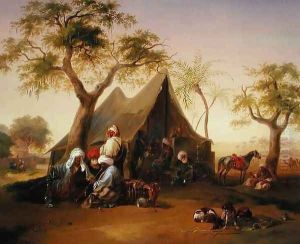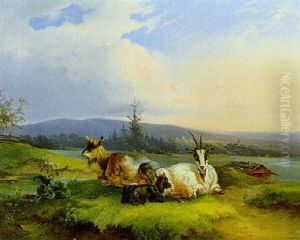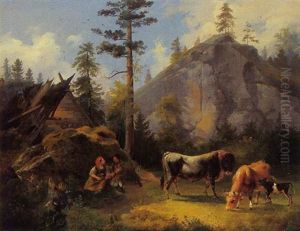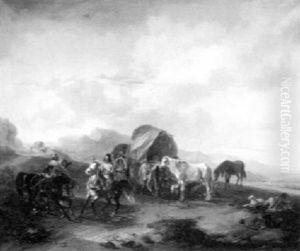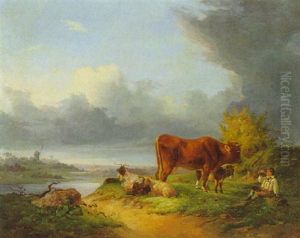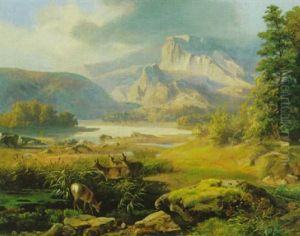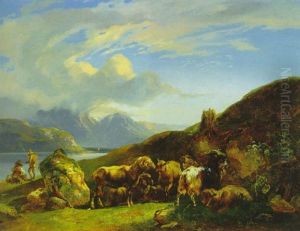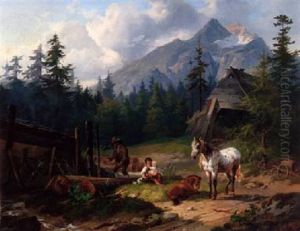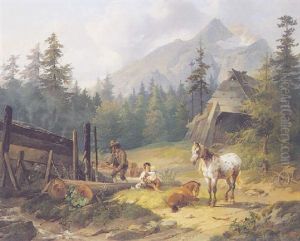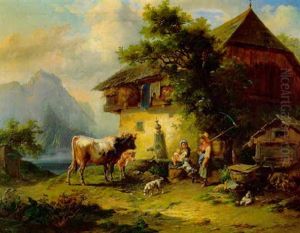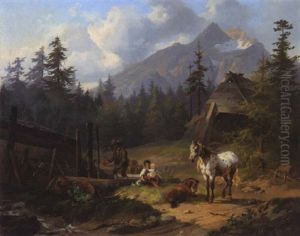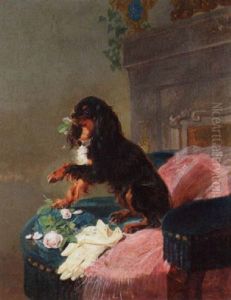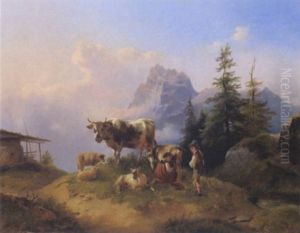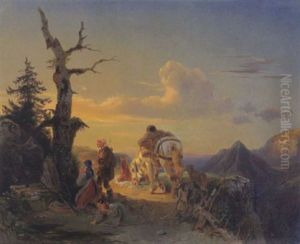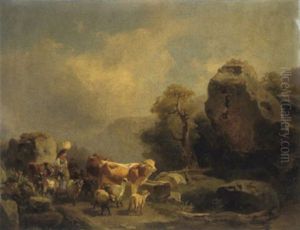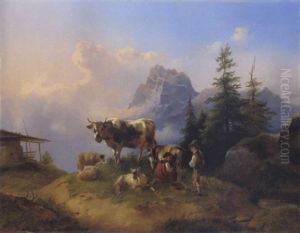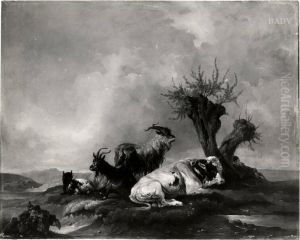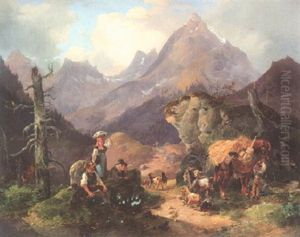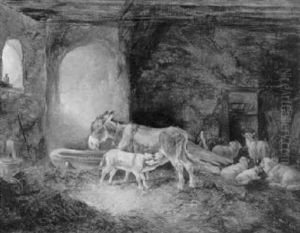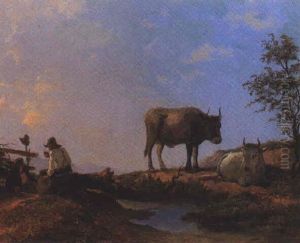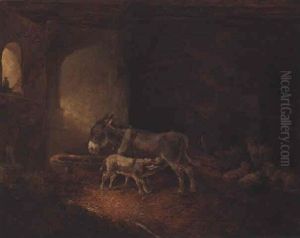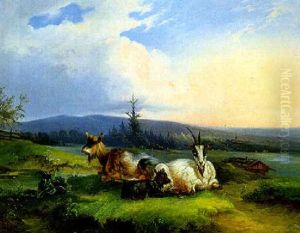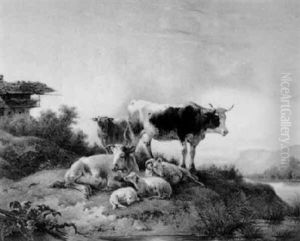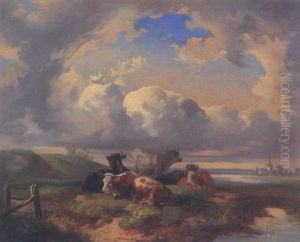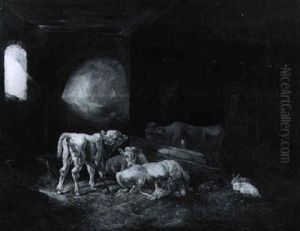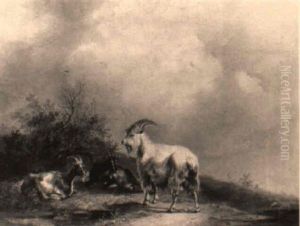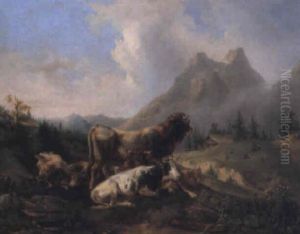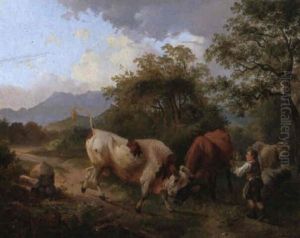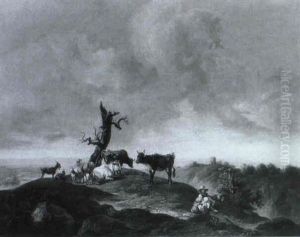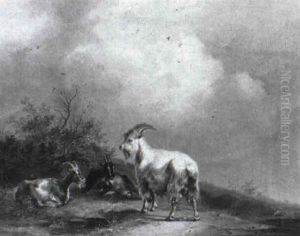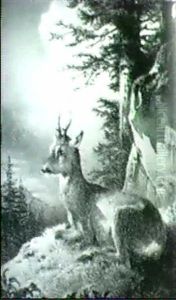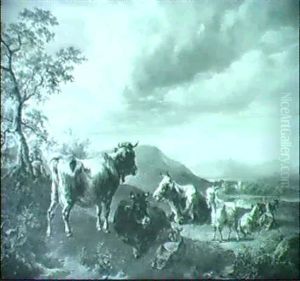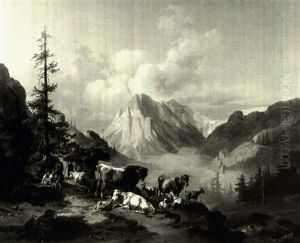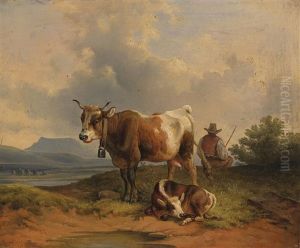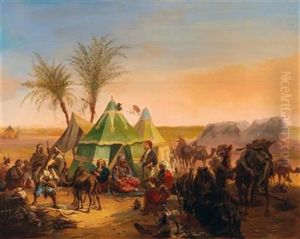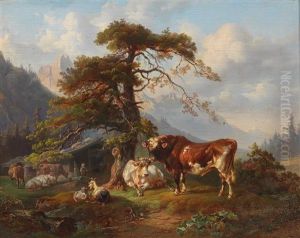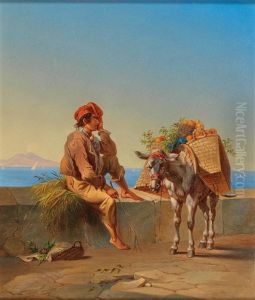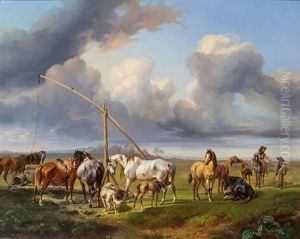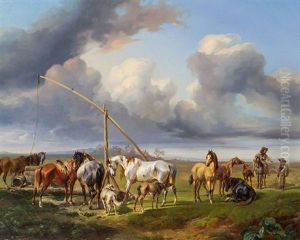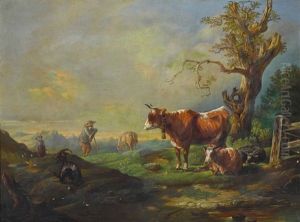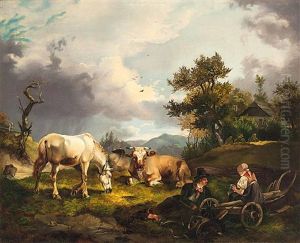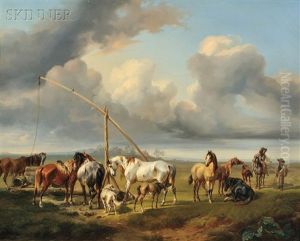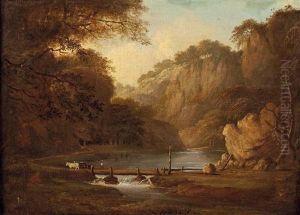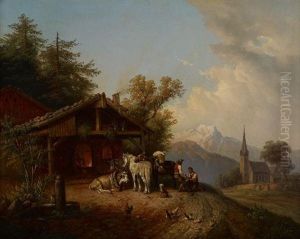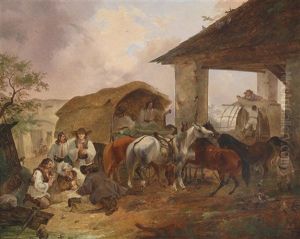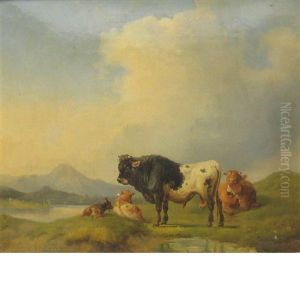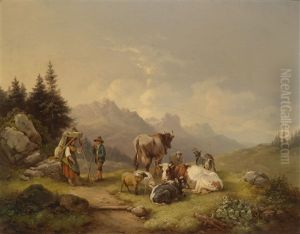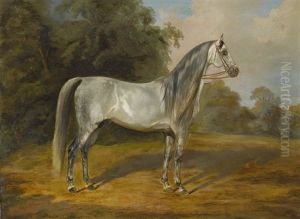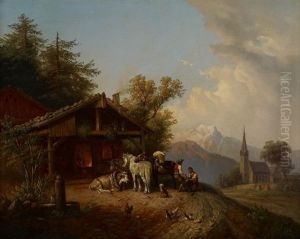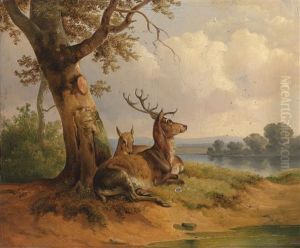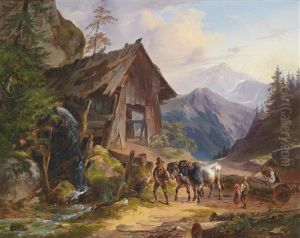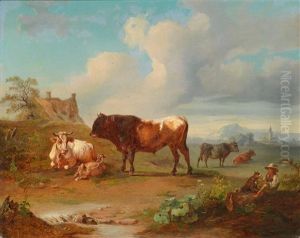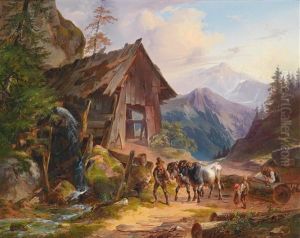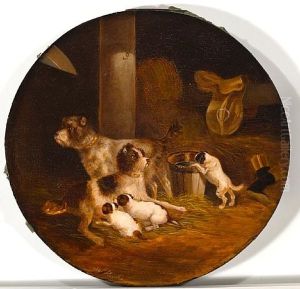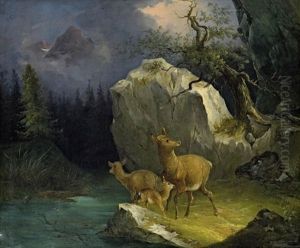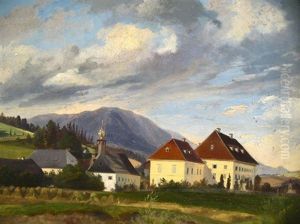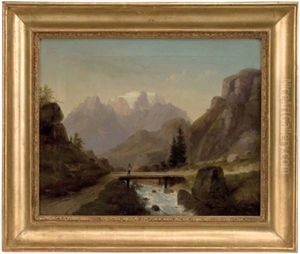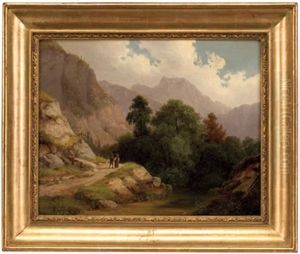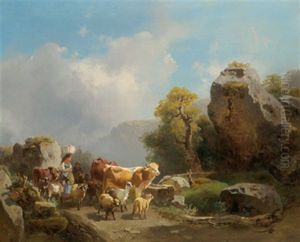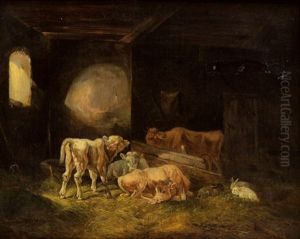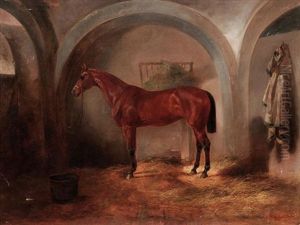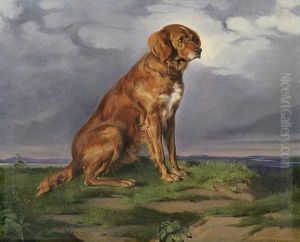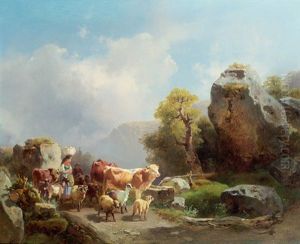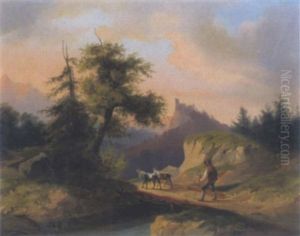Joseph Heicke Paintings
Joseph Heicke, born in 1811, was an Austrian painter, recognized for his contributions to landscape and architectural painting. Emerging from a period that saw the Romantic movement flourish, Heicke's works often depicted the beauty and majesty of nature, alongside the grandeur of human-made structures, capturing the essence of the Austrian and broader European landscapes with a delicate yet profound touch. His life, although not extensively documented, reflects the journey of an artist deeply committed to exploring and expressing the world through the lens of Romanticism.
Educated in the fine arts in Vienna, Heicke was part of a vibrant artistic community in the Austrian capital, a city that was a hub for cultural and intellectual activity in the 19th century. During this time, Vienna was undergoing significant changes, with the Romantic movement sweeping through the arts, influencing literature, music, and painting. Heicke, with his keen interest in landscapes and architecture, found himself in the midst of a burgeoning scene that valued emotion, individualism, and the sublime in nature.
Throughout his career, Joseph Heicke displayed a remarkable ability to capture the interplay between light and shadow, a characteristic feature of Romanticism, imbuing his landscapes with a sense of awe and wonder. His paintings often featured the Austrian countryside, showcasing its rolling hills, dense forests, and serene rivers, as well as its quaint villages and majestic castles. Heicke's architectural works, on the other hand, were meticulous in detail, reflecting his profound appreciation for the historical and cultural significance of buildings.
Despite his talent and contributions to the art world, Joseph Heicke's name is not as widely recognized today as some of his contemporaries. He passed away in 1861, leaving behind a body of work that continues to be admired by those who encounter it, whether in museums, galleries, or private collections. His paintings remain a testament to the Romantic spirit, capturing the beauty and complexity of the natural and built environments with sensitivity and depth.
In summary, Joseph Heicke's legacy as an Austrian painter is marked by his exquisite landscapes and architectural paintings that reflect the Romantic era's fascination with nature, emotion, and the human experience. His works serve as a window into the 19th-century Austrian ethos, offering viewers a chance to engage with the past through the eyes of an artist deeply attuned to the world around him.

